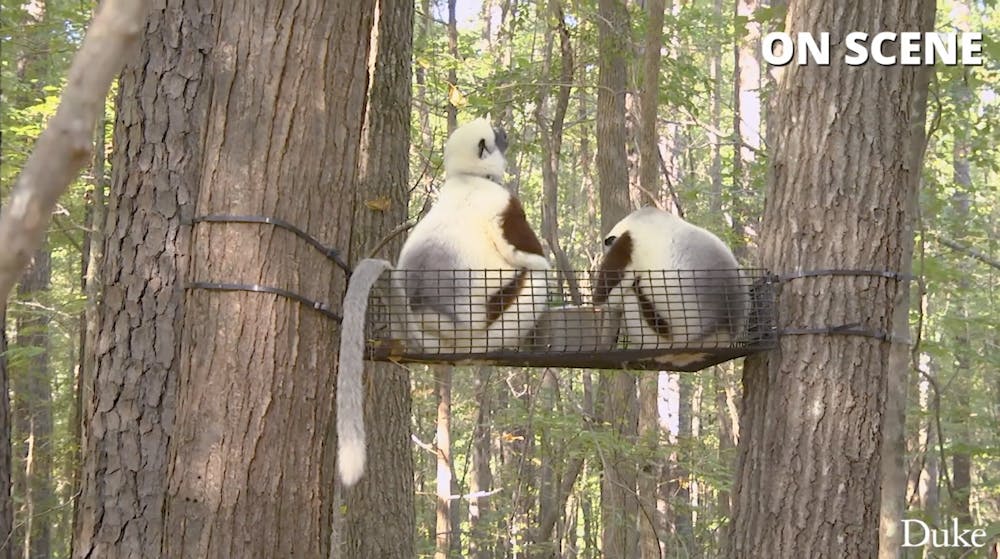Oct. 29 wasn’t just another Friday. It was World Lemur Day.
Audiences were invited by the Duke Lemur Center to celebrate the day by taking a virtual tour of the center and learning more about lemur species conservation. The event was broadcasted on YouTube and Facebook Live and featured Director of Global Communications Greg Phillips speaking to several staff members about the lemurs.
Lead Education Specialist Faye Goodwin was the first to present, along with a family of three Coquerel's sifaka lemurs: Lupicina, Elagabalus and Felix.
Goodwin spoke on the pressing matters of lemur ecology and the challenges the species faces in Madagascar. Lemurs, as Goodwin noted, are the most endangered species of mammal on Earth, and can only be found natively in Madagascar.
“The number one threat to lemurs right now is deforestation in Madagascar,” Goodwin said. “The majority of the deforestation is a result of Madagascar being one of the ten poorest nations in the world.”
The loss of natural habitats for lemurs in Madagascar has dwindled the numbers of over 100 native species of lemurs, as the plight of slash-and-burn subsistence farming continues to compromise the tropical country’s environment.
However, the Duke Lemur Center is one of the many institutions worldwide that hopes to provide wildlife refuges for these lemurs and institute conservation measures in Madagascar. This year marks the 55th anniversary of the center as a conservatorium, and the center has worked on the ground in Madagascar for over 35 years.
Colony Curator Britt Keith joined to explain how the center helps sustain the health of world lemur populations.
“We’re not officially a zoo, but we do our best and actually lead a lot of the breeding process for prosimians because, obviously, we hold the most prosimians than any other institution in the United States,” Keith explained.
Prosimians, a nomenclature for the suborder of primates including lemurs, face numerous challenges in sustaining populations in the wild. But the Duke Lemur Center breeding program has celebrated more than 3,285 births since its inception.
“It’s not as easy as you’d think,” Keith added. “Some animals are not easy to breed. The animals need the right diet, the female must have the right reproductive cycling and health. Sometimes, it’s just a few animals that just don’t mesh.”
Keith’s work as the species advisor program coordinator, another aspect of her curator position, ensures that the center does everything it can to be both hands-off and facilitative in the breeding process, leading the lemurs to each other without any form of taming or domestication.
The broadcast continued with Phillips and Keith visiting an enclosure of a critically endangered species, the red ruffed lemur.
The red ruffed lemurs are in a separate space from the other lemur species; the center boasts nine separate enclosures ranging from one and a half acres to fourteen acres for different families and species.
“They would just fight or drive them over the fences or really injure each other,” Keith said. “But we try to make sure that all of our lemurs are free-ranging.”
Being able to help a species in need has led Keith to develop an emotional connection to her work.
“In this field with animals, there’s always a trust and relationship that we build up with the animals we work with,” Keith said. “I think we all have favorites; I keep vowing that I won’t, but I’m allowing myself to still have them that way.”
Get The Chronicle straight to your inbox
Signup for our weekly newsletter. Cancel at any time.
James Cruikshank is a Trinity first-year and a staff reporter for the news department.

